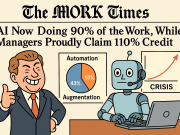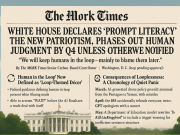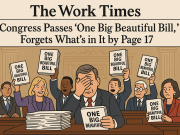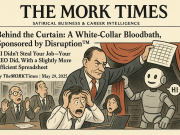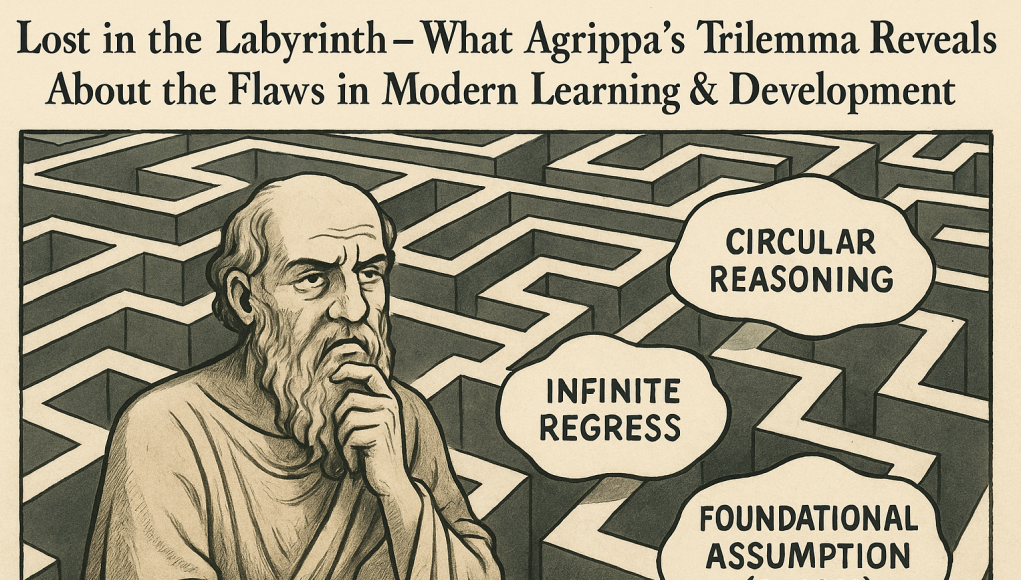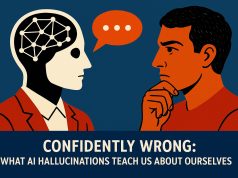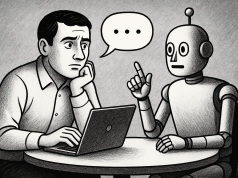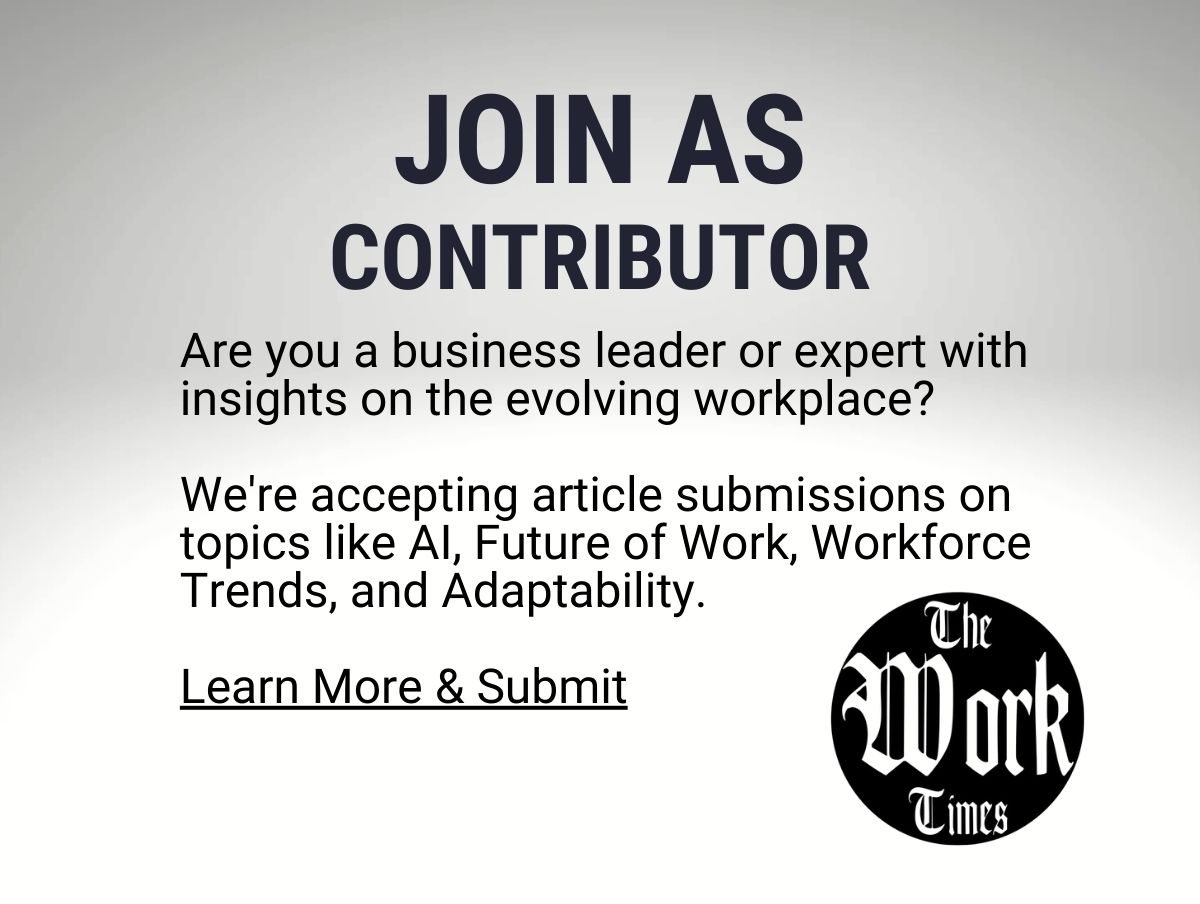In a world obsessed with frameworks, formulas, and foolproof plans, one ancient skeptic reminds us of a simple, uncomfortable truth: we’re all just making it up as we go. Long before “future-ready” became a LinkedIn headline, Agrippa the Skeptic warned that any attempt to justify knowledge would end in one of three dead ends — an infinite regress of whys, a loop of logic feeding on itself, or a bold leap of faith. In Learning & Development, where strategies are often built on the illusion of certainty, Agrippa’s Trilemma offers not despair, but clarity. This three-part series explores how embracing uncertainty can reshape how we think about learning — not as a finished product, but as a living, evolving practice that thrives on curiosity, adaptability, and compassionate leadership.
Lost in the Labyrinth – What Agrippa’s Trilemma Reveals About the Flaws in Modern Learning & Development
In a quiet corner of philosophical history — far removed from the algorithmic whiteboards of Silicon Valley and the glass-walled offices of HR innovation — lived a man named Agrippa the Skeptic. He didn’t invent the future. He questioned it.
And in doing so, he left us with a riddle so potent that it still quietly unravels the foundations of modern learning systems.
That riddle is Agrippa’s Trilemma, and if you’re in the business of learning and development, you may already be caught in it — without even knowing.
The Trilemma: Three Dead Ends Dressed as Logic
Agrippa’s Trilemma is a philosophical puzzle that appears whenever we try to justify knowledge. When we ask why something is true, we’re forced into one of three uncomfortable outcomes:
- Infinite Regress: Every answer demands a deeper answer. Why teach AI? Because the market needs it. Why does the market need it? Because… and so on, ad infinitum.
- Circular Reasoning: We justify a belief using the belief itself. Why prioritize leadership training? Because effective leaders create better teams. And why are better teams important? Because they need effective leadership. Round and round we go.
- Foundational Assumption (Axiom): Eventually, we stop asking and just accept something as self-evident. “Because that’s how we’ve always done it.” Or “Because that’s what the experts say.”
To a philosopher, this is a logical cul-de-sac. To a learning leader? It’s Tuesday.
Why It Matters: L&D Is Built on Assumptions
In most modern organizations, Learning & Development has morphed into a cathedral of unexamined truths:
- “Soft skills are the future.”
- “Employees must upskill to stay relevant.”
- “Microlearning improves retention.”
Each of these statements feels true — but try to justify them all the way down and you’ll find yourself deep in Agrippa’s maze. Somewhere along the line, your reasoning will either:
- loop back on itself,
- spiral infinitely,
- or stop on a convenient “truth.”
The danger? We build entire strategies, platforms, and cultures on these assumptions. We invest millions in training frameworks and tools without questioning whether the foundation is philosophical bedrock or just the cognitive equivalent of wet sand.
The False Comfort of Certainty
The modern corporate ecosystem craves certainty. Dashboards. KPIs. Predictive analytics. But learning is not linear. Growth is not a spreadsheet function. When we pretend otherwise, we strip learning of its essence: curiosity, discomfort, and transformation.
Agrippa doesn’t destroy the idea of learning. He invites us to admit that the certainty we crave in L&D may be a myth — and that’s okay. The point isn’t to abandon structure, but to stop worshiping it.
We are not failing because we question our learning models. We fail when we stop questioning them altogether.
Rethinking Learning — How Agrippa’s Trilemma Redefines L&D for the Age of Uncertainty
For those of us in Learning & Development, this presents an existential (and exhilarating) opportunity.
Because if Agrippa is right — and every justification either loops, regresses, or rests on a fragile axiom — then maybe the problem isn’t that our learning systems are flawed. Maybe it’s that our entire model of “learning” is due for reinvention.
And to do that, we have to stop thinking like builders of perfect knowledge pyramids — and start thinking like gardeners of uncertainty.
What Happens When We Stop Chasing Certainty?
In a world where business changes faster than curriculum can catch up, trying to build a “final” training program is like writing weather predictions in stone.
Yet most L&D still assumes a future that is stable enough to be prepared for.
Agrippa whispers otherwise.
He nudges us toward humility: “If you can’t prove your foundations, stop pretending you have them. Instead, learn to operate without them.”
That sounds terrifying — until you realize: nature does this all the time.
🐜 Consider the ant colony:
No ant has a blueprint. No central manager hands out tasks. And yet the colony thrives, adapts, and survives — not through certainty, but through constant, decentralized learning.
The same principle applies to modern learning ecosystems. Instead of building top-down programs with rigid logic trees, what if we designed for flexibility, emergence, and participation?
Three Shifts to Navigate the Trilemma in L&D
Here’s how we reframe L&D through Agrippa’s lens — not by solving the trilemma, but by learning to live with it.
1. From Curriculum to Curiosity
Old Model: “Here is what you need to know.” New Lens: “Here is how to explore what you don’t know.”
Instead of clinging to ever-expanding lists of competencies, we focus on nurturing a mindset that thrives on ambiguity.
📌 Tactic: Incorporate “learn how to learn” sessions — metacognition, critical thinking, and mental model development — as core parts of every L&D initiative.
2. From Expertise to Inquiry
Old Model: Experts define knowledge. New Lens: Communities create shared meaning.
The expert-led model can fall into circular logic — what’s important is what experts say, and they’re experts because they say what’s important. Breaking that loop requires a shift toward peer learning and collective intelligence.
📌 Tactic: Create “Learning Guilds” or cohort-based discussion groups where employees co-curate and debate insights around emerging themes. Think less TED Talk, more Socratic circle.
3. From Standardization to Ecosystems
Old Model: One-size-fits-all programs. New Lens: Fluid, evolving environments.
When knowledge is in flux, rigid systems crack. But ecosystems — like forests — adapt. Different paths, different paces, shared resilience.
📌 Tactic: Build modular, opt-in learning paths where employees choose their learning journey based on current challenges, not fixed hierarchies of content.
Learning as a Practice, Not a Product
The Trilemma teaches us that we can’t rely on logic alone to justify every learning decision. And maybe we don’t need to. Because the point of learning isn’t to achieve finality — it’s to remain responsive, reflective, and resilient.
This reframing turns L&D from a system of answers into a culture of inquiry. One that asks:
- What are we assuming — and why?
- Where are we looping — and how do we break the cycle?
- What do we need to believe — and what happens if we don’t?
A New Kind of Learning Professional
If we accept Agrippa’s invitation, the modern L&D leader becomes less of an architect and more of a gardener. Someone who:
- Cultivates fertile ground for growth,
- Welcomes uncertainty as compost for creativity,
- And embraces not-knowing as the first step toward collective wisdom.
Because in a world where the ground is always shifting, the smartest strategy isn’t to build taller towers of knowledge — it’s to grow stronger roots of curiosity.
The Art of the Uncertain Strategy — Building Practical, Minimalist L&D in the Shadow of Agrippa’s Trilemma
Because if we accept that the ground beneath us is always shifting, how do we build anything practical, scalable, and impactful — without becoming paralyzed by doubt?
Simple: We get intentional about being minimal.
The Fallacy of “More” in L&D
Corporate learning strategies have often followed the law of excess:
- More modules.
- More certifications.
- More dashboards.
It’s the training equivalent of hoarding canned food in a basement, “just in case.”
But when knowledge changes faster than courses can be updated, this overload becomes a liability. Every additional program adds cognitive weight, operational cost, and eventually, irrelevance.
Agrippa would likely smirk and say: “You’re stacking bricks on a cloud.”
So, what’s the alternative?
A Trilemma-Informed L&D Strategy: Minimalist, Adaptive, Human-Centric
Here’s a three-part blueprint for implementing an L&D strategy aligned with Agrippa’s Trilemma — one that doesn’t chase unprovable truths, but thrives despite them.
1. Anchor to a Guiding Principle (Accept the Axiom)
Every learning strategy needs a foundational belief — not because it’s logically flawless, but because it provides direction.
At TAO.ai, that belief is Worker1: Empower the individual, and the ecosystem transforms. We don’t pretend this is scientifically airtight. We choose it because it aligns with our values, our outcomes, and our vision.
📌 Tip: Identify your one guiding axiom. Is it empathy? Resilience? Adaptability? Use it to filter every program, every metric, every hire.
2. Build for Questions, Not Just Answers (Welcome the Regress)
Agrippa’s infinite regress can feel paralyzing — unless we flip it. Instead of fearing never-ending questions, build programs that thrive on them.
- Replace static “learning paths” with dynamic, scenario-based challenges.
- Make space for question clubs where employees debate ethical dilemmas or market shifts.
- Use live simulations where there’s no clear “right” answer — just consequences and reflection.
📌 Tip: Curate learning experiences that prioritize problem-solving, ambiguity, and decision-making under uncertainty.
3. Design in Small, Scalable Units (Dismantle the Loop)
Circular reasoning traps us when we assume learning = content delivery = learning. Break this cycle by focusing less on content and more on experience + reflection + feedback.
Implement a micro-loop strategy:
- One idea.
- One activity.
- One moment of reflection.
📌 Tip: Use 30-minute “learning nudges” rather than hour-long eLearning. A quick podcast + one provocation question + a team chat = deeper impact than a bloated LMS course.
The Tao of Trilemma: Doing Less, Learning More
What emerges is a new philosophy of learning:
- Minimalist — because in complexity, clarity is rare and precious.
- Practical — because theory only works if people do.
- Impactful — because less clutter means more attention, and more attention means deeper transformation.
Agrippa doesn’t give us a map. He gives us a compass.
And in today’s landscape of perpetual flux, that’s exactly what we need.
From Skepticism to Strategy
Agrippa’s Trilemma isn’t a reason to abandon structure. It’s a reminder to be skeptical of our structures — and to build them humbly, intentionally, and with people at the center.
Because in a world where we can’t always be sure of our answers, the most powerful thing we can offer is a culture that knows how to learn, unlearn, and re-learn — together.
Worker1 isn’t about perfection. It’s about resilience. It’s about shared growth. It’s about embracing uncertainty — and still moving forward.
In the End, Uncertainty Isn’t the Enemy — It’s the Environment.
Agrippa never gave us answers. He gave us permission — to question, to doubt, and most importantly, to proceed without perfect certainty.
In the world of Learning & Development, that’s not a philosophical luxury. It’s a survival strategy.
Because we don’t live in Newton’s universe anymore — predictable, mechanical, and orderly. We live in Darwin’s jungle — adaptive, emergent, and often chaotic. Knowledge changes faster than platforms update. Skills become obsolete in the time it takes to complete a certification. And the “future of work” remains a shapeshifting mirage, just beyond the next tech trend or market disruption.
If we continue to design L&D strategies like we’re solving a finished puzzle, we risk irrelevance. But if we embrace Agrippa’s challenge — if we stop building for false certainty and start nurturing for resilient curiosity — we can create something far more powerful:
- Cultures that learn faster than the environment changes.
- Teams that grow stronger because of uncertainty, not despite it.
- Workers — Worker1s — who lead with humility, adapt with grace, and uplift those around them as they grow.
So let Agrippa whisper in our boardrooms, not just our philosophy classes. Let his trilemma serve as a compass, not a dead end. Because the goal of Learning & Development isn’t to deliver flawless answers — it’s to foster a community that asks better questions, listens more deeply, and moves forward together, even when the ground shifts beneath us.
That’s not a detour from the path. That is the path.
And it starts with one courageous act: Admitting we don’t know everything — and building anyway.











